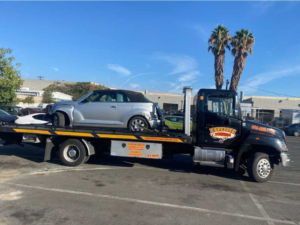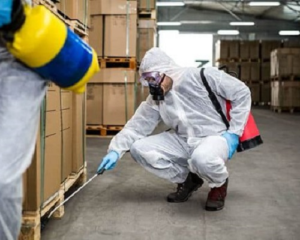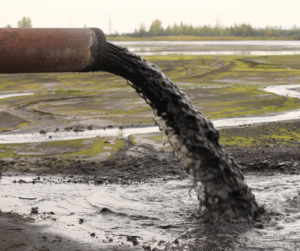Drivers should keep the number of a 24-hour towing service on speed dial. Emergencies can occur at any time, from a breakdown in unfamiliar territory to an accident at night.
24 Hour Towing Phoenix service will offer roadside assistance, including flat tire fixes, jump-starts, and fuel delivery. They also work closely with insurance companies, reducing customers’ out-of-pocket costs.

Many people have their doctors, dentists, and attorneys on speed dial, but they often overlook the importance of having a 24/7 towing service on hand. These companies can help you out when the unexpected happens, like a breakdown in the middle of the night or an accident on the highway. They can also provide roadside assistance, such as jump-starting or refueling, or even help you get out of a ditch.
The biggest benefit of a 24-hour towing company is their availability when you need them. Breakdowns and accidents don’t stick to a schedule, so having a company you can call at any time is vital. It eliminates the need to wait until morning or business hours for support, which can lead to frustration and stress in an already stressful situation.
Another advantage of 24-hour towing is their quick response time. When your car breaks down, it can be dangerous to stand on the side of the road, especially at night or in bad weather. You might be blocking an intersection or endangering other drivers. A 24/7 towing service can dispatch a truck quickly, minimizing the amount of time you’re in a vulnerable position.
You should also look for a 24/7 towing company that offers transparent tow pricing and service reliability guarantees. These can include promises about when they’ll arrive, professional handling of your vehicle, and a guarantee that they will keep your information private. This can ease your worries about getting ripped off by an unscrupulous company.
If your car is stranded in an unsafe location, a 24-hour towing service can help you find safe parking. They can also offer storage for your vehicle until repairs can be made. These facilities are well-lit, secured, and manned by trained professionals who know how to handle vehicles in an emergency situation.
Many modern 24/7 towing services also offer other roadside assistance services, including jump-starts, fuel delivery, and lockout assistance. These extra services can be a lifesaver when you’re in an emergency situation, and they can also save you money in the long run. Some of these services may be covered by your auto insurance or roadside assistance program, so it’s worth checking before deciding on a towing service.
24 Hour Assistance
Having the number of a 24-hour towing service on speed dial is an essential part of being a driver. Breakdowns and accidents don’t stick to a schedule, and they often happen at the most inconvenient times. Whether you’re on a long road trip or in an unfamiliar area, having a 24/7 towing service can save the day, especially when your car breaks down at night or in bad weather.
Many 24-hour towing services have a team of trained professionals ready to help you, and they can handle most problems with your vehicle. In addition to towing, they can offer a wide range of roadside assistance services, such as tire changes, jump-starts, lockout service, and fuel delivery. If you’re lucky, a tow truck can come out and fix your problem on the spot. This can save you a lot of time and money.
24-hour towing services usually work quickly, so you won’t have to wait long for help. They understand the urgency of your situation and prioritize getting to you as soon as possible. This is especially important when you’re on a highway or other busy roads where the risk of injury or traffic accidents is high.
In addition, 24-hour towing services can often provide a flat-rate price for their services, which means you won’t have to worry about paying extra for certain services. This is a great benefit for drivers who are budget-conscious and want to avoid hidden fees. Some companies also offer a warranty on their towing services, which can give you peace of mind in the event that something goes wrong with your vehicle.
For commercial truck drivers and fleet managers, having a 24-hour towing service on speed-dial is an absolute necessity. These services can help you out of a jam at any hour, and they’re designed to handle trucks of all sizes. Their specialized tow trucks are made for specific situations, from changing tires to recovering from an accident to moving heavy vehicles over long distances. They can also store your vehicle in a safe location until it’s repaired, giving you peace of mind on the road.
24 Hour Recovery
It can be quite a panic-inducing when your vehicle breaks down, especially at inconvenient times. Fortunately, there are 24-hour towing services that can help you get out of a sticky situation. They provide emergency roadside assistance and can help you navigate the often confusing paperwork involved in insurance claims. They also offer a variety of add-on services, like battery jump starts, tire changes, and fuel delivery. These services can help you save money in the long run.
A good 24-hour towing service will have a team of trained professionals ready to assist you with your vehicle problems. They will respond quickly to your call, and they will have the right equipment for the job. They will also have the right equipment and knowledge to repair your car on the spot, if necessary. Additionally, they will provide a detailed post-service report to make sure that you are happy with the services that they provided.
Whether you are on a long road trip or simply commuting in the early morning, having access to reliable 24/7 towing is important. Having the peace of mind that help is available at any time can make your travels more enjoyable and stress-free.
The most important thing to remember is that you should never try to fix a problem yourself. This can be dangerous and cause more damage to your vehicle. If you are in an unfamiliar or isolated area, you may not be able to find someone to help you, so it is best to contact a 24-hour towing service for immediate assistance.
A reliable 24 hour towing recovery will have a fleet of specialized trucks designed for different situations. These include flatbed, hook and chain, wheel-lift, and integrated tow trucks. Each type of truck is made for specific tasks, such as changing tires, rescuing vehicles from accidents, and towing over long distances.
In addition, a 24-hour towing service will have the experience and equipment needed to tow any kind of vehicle. They can handle small sedans, SUVs, trucks, motorcycles, and even heavy-duty vehicles. They will also have a number of reputable mechanics on staff to make sure that you receive the highest quality of service.
24 Hour Service
Having a 24-hour towing service on speed dial is a great way to keep your car safe in an emergency. These services will be able to respond to your call promptly and can provide roadside assistance or flatbed towing if needed. They also offer transparent pricing so you can be sure that you’re getting a fair price. Additionally, they will follow safety protocols during the towing process to ensure your vehicle’s and driver’s safety.
Whether you’re on the side of the road in the middle of the night or in the midst of a snowstorm, 24-hour towing services will be able to help you. They can come out to your location and assist you with a variety of problems, including flat tires, dead batteries, and empty fuel tanks. They can even unlock your vehicle and jump-start your battery if necessary. This service is especially useful for drivers who frequently travel in their cars for work or play.
Another advantage of using 24-hour towing services is that they’re available around the clock, even on holidays and weekends. This is important because roadside emergencies can happen any time, regardless of the day or night. The 24/7 service makes it easier for you to contact them when your vehicle breaks down and gets you back on the road quickly.
Most 24 hour towing companies have several trucks on the road, which means they can come out to your location quickly. This is a big benefit if you’re in the middle of nowhere or a busy highway and need assistance with your vehicle. A fast response can save you money and time, and make the difference between a smooth ride home or a long delay in your commute.
Many 24-hour towing companies offer more than just towing, including tire changes, jump starts, and lockout services. They can even offer fuel delivery and other services, so you don’t have to go far for help when your car breaks down. These services can also reduce downtime and keep your truck running smoothly, which is important for companies that rely on road travel.




